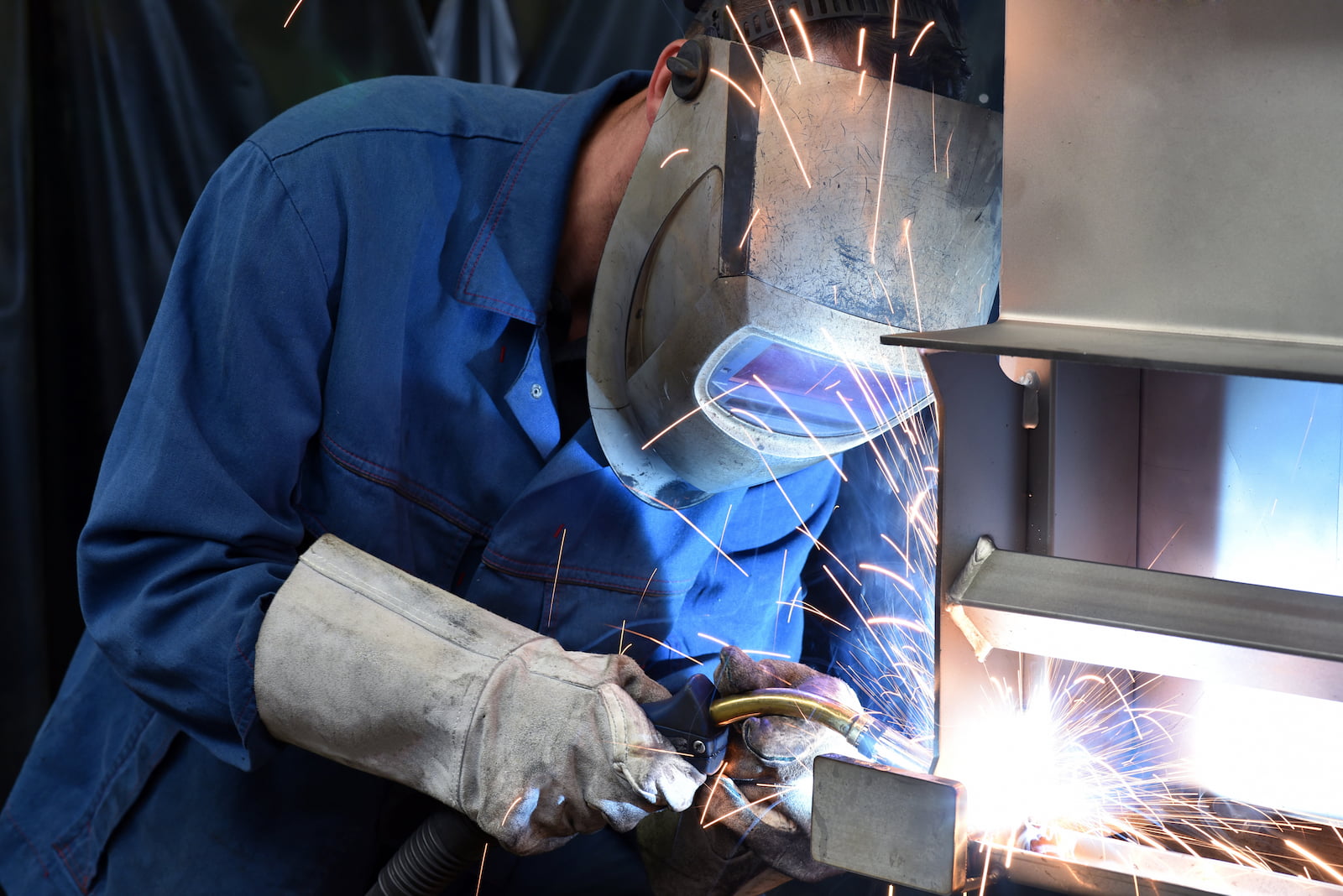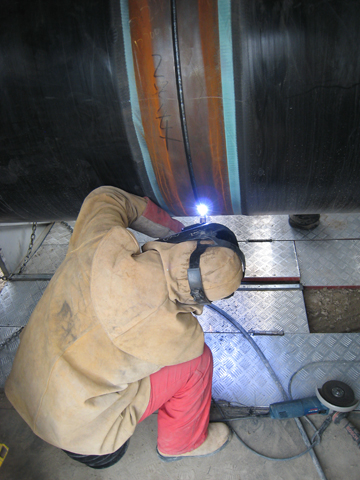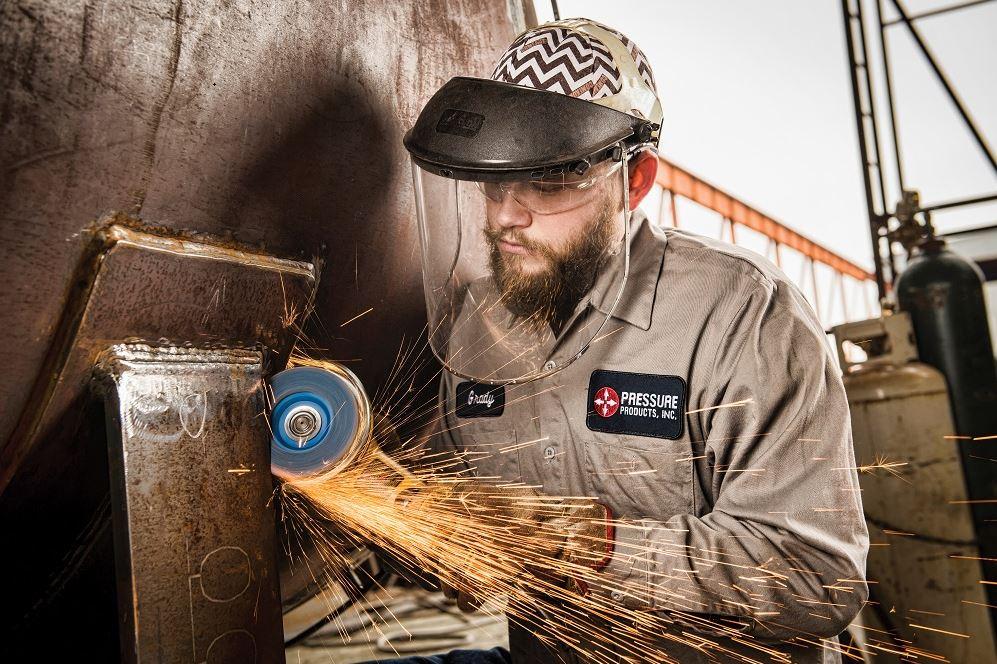Immediate responses to weld misalignment in Montana Mobile Welding and Repair Fabrication
Common Welding Repair Issues and Exactly How to Address Them Efficiently
Welding repair work usually run into a variety of problems that can jeopardize the integrity of the end product. Usual issues consist of inadequate infiltration, porosity, and imbalance, amongst others. Each problem offers special difficulties that call for details methods for resolution. Comprehending these problems is crucial for welders intending to improve their abilities and end results. This conversation will certainly explore these common welding repair service problems and effective approaches to address them.
Inadequate Penetration
Poor penetration takes place when the weld metal falls short to fully fuse with the base product, leading to weak joints and prospective structural failings. This problem often comes from insufficient warmth input, incorrect electrode angle, or inappropriate welding rate. Welders may experience poor infiltration as a result of a miscalculation of the needed parameters for a details material density or type. In addition, contamination on the base material's surface can hinder reliable bonding, worsening the trouble. To attend to inadequate penetration, welders need to ensure ideal setups on their devices and preserve a tidy job surface. Routine evaluation of welds is suggested to recognize any kind of shortages early, enabling prompt corrections and the avoidance of jeopardized structural honesty in bonded settings up.
Porosity
Porosity is an usual defect in welded joints that materializes as small gas bubbles caught within the weld metal. This flaw can endanger the honesty of the weld, resulting in reduced stamina and potential failure under anxiety. Montana Mobile Welding and Repair Welding. Porosity usually develops from contamination, wetness, or incorrect welding methods, which allow gases to leave right into the molten weld pool. To address porosity, welders should guarantee correct surface area prep work, preserve a tidy functioning setting, and utilize appropriate welding parameters. Additionally, choosing the right filler product and shielding gas can alleviate gas entrapment. Regular evaluation and screening of welds can help identify porosity early, guaranteeing timely restorative activities are taken, consequently maintaining the quality and integrity of the bonded structure
Misalignment
Imbalance in welding can develop from numerous variables, consisting of inappropriate configuration and thermal expansion. Understanding the origin causes is essential for reliable resolution. Numerous correction strategies are offered to realign parts and assure architectural integrity.
Sources of Misalignment
Welding imbalance frequently originates from a selection of underlying issues that can endanger architectural integrity. One key cause is incorrect fit-up of elements before welding, which can cause spaces and uneven surface areas. Variations in thermal expansion throughout the welding process can also cause distortion, particularly if the products being joined have various coefficients of expansion. In addition, poor securing and fixturing may fall short to hold parts securely in position, resulting in movement during welding. Inadequately kept tools, consisting of welding makers and devices, might introduce disparities in the weld grain, additional adding to imbalance. Driver error, stemming from inadequate training or experience, can additionally play a considerable role in producing misaligned welds.

Adjustment Strategies Readily Available
Resolving misalignment successfully requires a combination of corrective techniques customized to the particular problems at hand. One typical method is making use of jigs or components to hold parts in the right position during welding, making certain constant placement. Furthermore, pre-heating the materials can help in reducing distortion and boost fit-up. For considerable misalignment, mechanical adjustment strategies, such as using hydraulic jacks or clamps, can be employed to remedy the setting before welding. Post-weld heat therapy might also be required to eliminate stress and anxieties triggered by misalignment. Lastly, cautious examination and change throughout the setup phase can prevent misalignment problems from coming to be significant problems, advertising a smoother welding process and improving total structural honesty.
Distortion
Distortion is a typical difficulty in welding that can develop from different aspects, consisting of unequal heating and cooling. Recognizing the sources of distortion is necessary for implementing efficient prevention strategies. Resolving this concern not only improves architectural integrity but also boosts the overall top quality of the weld.
Root causes of Distortion
When subjected to the extreme warmth of welding, products often go through adjustments that can lead to distortion. This sensation primarily develops from thermal expansion and contraction during the welding process. As the weld location warms up, the material increases; upon cooling, it contracts, which can develop inner stresses. Additionally, unequal heating across a workpiece can intensify these tensions, causing bending or bending. The kind of material also plays a significant duty; steels with varying thermal conductivity and coefficients of growth may respond in a different way, resulting in uncertain distortions. Inadequate joint layout and poor fixturing can contribute to imbalance during welding, increasing the probability of distortion. Recognizing these reasons is vital for reliable welding fixing and prevention approaches.
Prevention Techniques
Efficient avoidance techniques for distortion during welding emphasis on managing warm input and ensuring proper joint layout. Preserving a constant warm input aids to minimize thermal expansion and tightening, which can lead to distortion. Making use of techniques such as pre-heating the work surface can also lower the temperature level slope, promoting consistent heating. Additionally, selecting ideal joint styles, such as T-joints or lap joints, can enhance security and lower tension focus. Carrying out correct fixturing to safeguard the work surfaces in location further aids in preserving placement during the welding procedure. Staggered welding sequences can disperse heat much more equally, avoiding localized distortion. By using these strategies, welders can significantly lower the likelihood of distortion and boost the general quality of their welds.
Breaking
Fracturing is a common issue run into in welding repair services, commonly arising from various factors such as improper cooling rates, material option, or poor joint prep work. The event of splits can greatly endanger the integrity of the weld, bring about potential failings throughout operation. To address this concern, welders have to initially assess the origin, making sure that products work and suitably chosen for the specific application. Additionally, managing the cooling price during the welding process is necessary; quick cooling can induce stress and cause breaking. Correct joint layout and preparation additionally add to reducing the risk. Carrying out these approaches can improve weld top quality and longevity, inevitably reducing the probability of splitting in finished weldments.

Incomplete Blend
A considerable issue in welding repair services is insufficient fusion, which takes place when the weld metal does not properly bond with the base product or previous weld passes - Welding. This flaw can result in weak points in the joint, potentially jeopardizing the integrity of the bonded framework. Variables adding to insufficient fusion include inadequate warm input, improper welding technique, and contamination of the surfaces being signed up with. To address this issue properly, welders need to assure proper pre-weld cleaning and surface prep work, as well as adjust their welding specifications to achieve adequate penetration and fusion. Regular inspection during the welding procedure can additionally assist identify incomplete combination early, enabling timely corrective steps to boost original site the total quality of the weld
Overheating
While welding repairs can improve architectural stability, overheating provides a significant difficulty that can lead to material degradation. Excessive warmth during welding can change the mechanical homes of steels, resulting in decreased toughness, raised brittleness, and warping. This phenomenon is particularly critical in high-stress applications where structural dependability is critical. Identifying overheating can involve visual examinations for discoloration or distortion, in addition to keeping an eye on temperature throughout the welding process. To mitigate the threats connected with getting too hot, welders ought to utilize proper strategies, such as regulating warm input, readjusting traveling rate, and utilizing suitable filler products. Furthermore, executing pre- and post-weld warmth treatments can assist restore product buildings and enhance the overall quality of the repair work, making sure lasting performance and safety.
Often Asked Inquiries
What Are the Usual Indicators of a Welding Flaw?

Exactly How Can I Check My Welds for Top quality?
To evaluate er70s welds for high quality, one can make use of aesthetic examinations, ultrasonic testing, and radiographic techniques. Each method ensures architectural stability, recognizes issues, and confirms adherence to defined requirements, eventually enhancing the dependability of the welded joints.
What Safety and security Precautions Should I Take While Welding?
When welding, one should prioritize safety by putting on ideal personal safety equipment, guaranteeing proper ventilation, securing combustible products away, maintaining a tidy workspace, and recognizing environments to avoid mishaps and injuries.
Can I Fix a Weld Without Redoing the Entire Joint?
Fixing a weld without redesigning the whole joint is pop over to this site possible, relying on the damage (Montana Mobile Welding and Repair Fabrication). Techniques such as grinding, including filler product, or using a welding procedure can successfully attend to specific problems while preserving the bordering structure
What Tools Are Crucial for Efficient Welding Fixes?
Essential devices for reliable welding repair work include a welding machine, cable brush, mill, protective gear, clamps, and filler materials. Each device plays a vital role in ensuring high quality and safety during the repair work process. Porosity normally develops from contamination, dampness, or incorrect welding methods, which enable gases to leave into the molten weld pool. Poorly conserved devices, including welding machines and tools, might present variances in the weld grain, further adding to misalignment. When subjected to the extreme heat of welding, materials usually go through changes that can lead to distortion. Fracturing is an usual issue encountered in welding repair work, usually resulting from different variables such as improper cooling prices, material choice, or poor joint preparation. A considerable concern in welding repair services is incomplete combination, which occurs when the weld steel does not properly bond with the base product or previous weld passes.